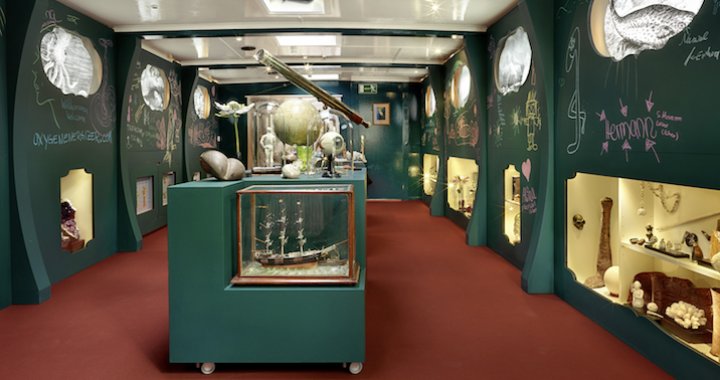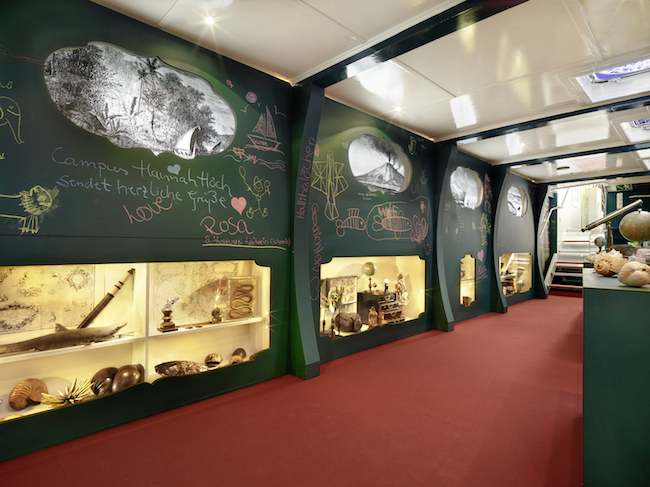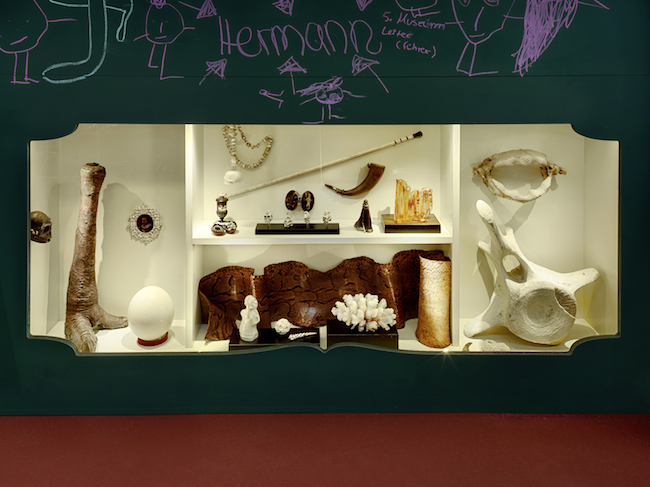
In Search of Knowledge On Board a Floating Treasury of Antique Objects
The WUNDERKAMMER SHIP in Berlin
Elina Ije
04/07/2016
Are museums and children truly a recipe for disaster? Not at all! One should, however, start with museum exhibitions specially created for children and elementary school students, and which feature topics that interest them. Unlike schools, museum programs can offer students a unique educational experience unbound by an obligatory curriculum. Surrounded by excellent examples of art, music, science and history, and concentrating on individual interests, young people can exercise their minds and discover new corners of the world. In addition, it’s a great way for parents to get involved in the educational process.
This spring, an unusual ship began its voyage in Berlin – the floating antique treasury known as the WUNDERKAMMER SHIP – featuring a deck-full of mysterious objects and unbelievable stories. Supported by the Olbricht Foundation, the WUNDERKAMMER SHIP is an interactive museum space that, up through October, will be making scheduled stops in both Berlin and Brandenburg. School-age children, including those with special needs, are invited to learn new things and engage in cultural debates.

Photo: Bernd Borchardt
A trip on the WUNDERKAMMER SHIP lasts 90 minutes, and is free of charge for groups of schoolchildren. From three to five in the afternoon, the ship is open to the general public.
The first proper collections of antique objects and unique souvenirs can be traced back to the Renaissance and Baroque eras, but the activity scaled its peak of popularity during the rule of England’s Queen Victoria. These Cabinets of Curiosities, also known as Cabinets of Wonder and Wunderkammer, kept hidden from the public eye such things as one-of-a-kind items, special works of art, rare natural objects, scientific instruments, and all sorts of peculiar souvenirs. To our eyes, these historical collections offer a reflection of the knowledge and world view held by the people of those times. But today, this age-old tradition of taking the viewer on a wonder-filled journey through the winding channels of world history and culture has been resurrected in Berlin – by the WUNDERKAMMER SHIP.

Photo: Bernd Borchardt
Answers to the following questions were provided by the team of the Olbricht Foundation:
What is the design inspiration behind the floating Wunderkammer?
The idea behind the Wunderkammer Ship was to evolve a mobile and interactive exhibition space that invites the viewer to wonder, discover, and understand outside of the classroom. As well as being a sensory experience, the ship should transmit knowledge in a playful and interactive way, expanding children’s cultural competence. Above all, it should encourage creativity and imagination. Together with students of the Department of Interior and Exhibition Design (Prof. Saalfeld), FH Potsdam, we created child-friendly exhibition architecture – a small Wunderkammer World – which also encourages visiting school groups to organize the space as they see fit.

Photo: Bernd Borchardt
How was the content developed? How were the themes selected?
For more than five years now, the Olbricht Foundation has been involved in enabling children and young people to experience a lively and creative approach to art and culture. In the rooms of me Collectors Room, we also offer workshops on the subject of the Wunderkammer with objects from the Renaissance and Baroque periods. So, the main content was already available, but it needed to be processed and amended for a 6-hour interdisciplinary school programme that would involve science, German, art, and other subjects (the visit of the ship only marks the culmination of this programme). In cooperation with teacher Rebecca Hoffmann, we compiled teaching material and a logbook for the teachers and children to prepare during the visit of the ship.
On the ship itself, older schoolchildren from the Evangelische Schule Berlin Zentrum and Hannah Höch Gemeinschaftsschule schools take the lead in guiding the visiting classes. The teaching schoolchildren themselves spent over a year studying the Wunderkammer, as well as evolving the featured themes, such as the history of cabinets of curiosities, collecting, etc.

Photo: Bernd Borchardt
Where did the specimens on display come from?
We are very happy that the Staatliche Museen zu Berlin, specifically the Bode Museum and its Sculpture Collection and the Museum for Byzantine Art, are providing objects from their teaching aid collection; also, the Olbricht Collection made many extraordinary Wunderkammer objects available. The objects come from a variety of Wunderkammer categories – like artificialia (precious artworks), naturalia (rare phenomena of nature), scientifica (scientific instruments), exotica (objects from strange worlds), and mirabilia (inexplicable items).
Photo: Adam Berry
Is there a particularly interesting story behind some of the exhibits? Which objects have garnered the greatest attention and admiration from visitors?
Each object has its own particular story to tell. During the workshop, the teaching schoolchildren present several objects that the kids particularly love. For example, the Coco de Mer, a nut which is part of the palm family and endemically originates from the Seychelles. Sailors found these nuts with bizarre forms mostly as flotsam in the sea, then decorated them with carvings and brought them through trade routes to Europe. Now they are very favored collector´s items. Another very admired exhibit is the “Unicorn”, the tusk of a narwhal. For a long time, people believed that this long, helical tusk was the horn of the legendary unicorn – and indeed, such rods were taken as proof of the existence of the fabled creature. It was only in 1638 that the Danish physician Ole Worm identified it as the tusk of the Arctic-dwelling narwhal. Another special feature of the Ship is that the kids are allowed to touch many of the exhibited objects.
